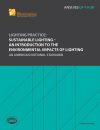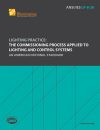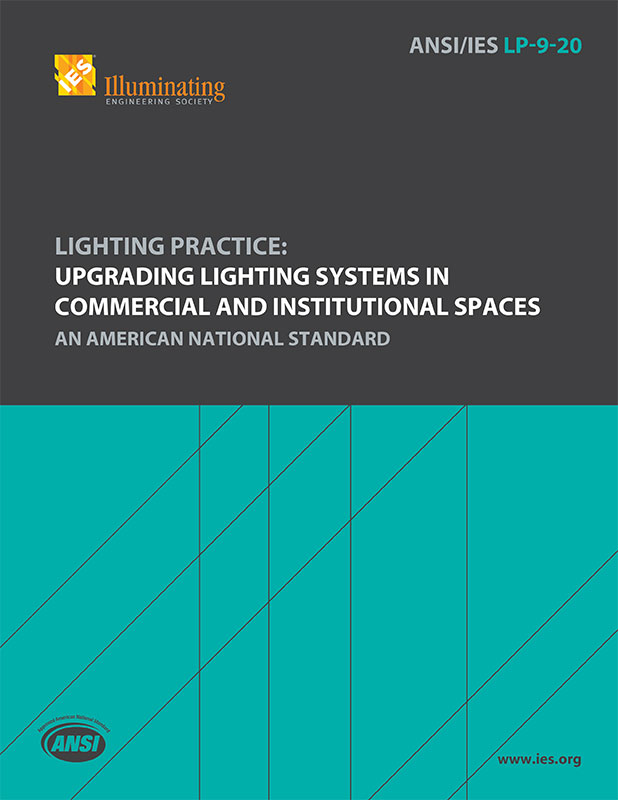Upgrading Lighting Systems in Commercial and Institutional Spaces
$90.00
For Member Pricing, Please Login
Member Price: $70.00
ANSI/IES LP-9-20
Document Type: Lighting Practice (LP)
Available as a downloadable secure PDF only.
To stay current with all IES standards, we recommend subscribing to the The Lighting Library as an Individual or through your company as a Sustaining Member.
In stock
Product Description
 Increasing lighting efficiency is often the most cost effective energy efficiency improvement that can be made to an existing building. There are three basic approaches for improving the energy efficiency of an existing lighting system: retrofit, redesign, or a combination of both. Retrofitting the existing luminaires is the more common approach. However, depending on a variety of factors, redesign may be the better choice. A thorough assessment is necessary to determine which of these methods is advantageous. This document addresses the general methods of performing a successful lighting upgrade. The designer should consult the latest product information obtained directly from lighting manufacturers for the most current data.
Increasing lighting efficiency is often the most cost effective energy efficiency improvement that can be made to an existing building. There are three basic approaches for improving the energy efficiency of an existing lighting system: retrofit, redesign, or a combination of both. Retrofitting the existing luminaires is the more common approach. However, depending on a variety of factors, redesign may be the better choice. A thorough assessment is necessary to determine which of these methods is advantageous. This document addresses the general methods of performing a successful lighting upgrade. The designer should consult the latest product information obtained directly from lighting manufacturers for the most current data.
Page count: 72 pages
Publisher: Illuminating Engineering Society (2020)
SKU: ANSI/IES LP-9-20
ISBN-13: 978-0-87995-277-8
Chapters:
- 1.0 Introduction and Scope
2.0 Lighting Upgrades: The Fundamentals
3.0 General Upgrade Considerations
4.0 Technology and Equipment Overview
5.0 Specific Technology Upgrades
6.0 Energy Reduction Strategies
7.0 Current Research
8.0 Specific Application Considerations
CONTENTS
- 1.0 Introduction and Scope
- 1.1 Introduction
1.1.1 Audience - 1.2 Scope
- 2.0 Lighting Upgrades: The Fundamentals
- 2.1 Lighting Upgrade: Retrofit, Redesign, or Both?
- 2.2 The Upgrade Process
2.2.1 Simple Walk-Through Assessment (ASHRAE Level 1 Lighting Analysis)
2.2.2 Initial Determination
2.2.3 Funding
2.2.4 Comprehensive Assessment
2.2.5 System Design
2.2.6 Cost Analysis
2.2.7 Specifications
2.2.8 Mockup
2.2.9 Acceptance
2.2.10 Pre-installation Walkthrough
2.2.11 Installation
2.2.12 Commissioning
2.2.13 Post-installation Walkthrough
2.2.14 Operation and Maintenance Manuals and As-Built Documents
2.2.15 Energy Verification
2.2.16 Occupant Satisfaction - 2.3 Common Practice
- 2.4 Generic Issues for Upgrade Projects
- 2.5 Equipment Alternatives for Upgrade Projects
- 2.6 Energy-Saving Upgrades
- 3.0 General Upgrade Considerations
- 3.1 Lighting Assessment
3.1.1 Performing the Assessment
3.1.2 Project Checklist
3.1.3 Lighting Assessment Survey Form - 3.2 Economic Issues
3.2.1 Introduction
3.2.2 Assessment and Initial Determination
3.2.3 Gaining the Expertise to Realize Economic Gains
3.2.4 Economic Considerations That May Be Overlooked - 3.3 Lighting Quality and Quantity
3.3.1 Redesign vs. Retrofit
3.3.2 Uniformity
3.3.3 Lighting Walls and Ceilings
3.3.4 Glare
3.3.5 Color
3.3.6 Task Lighting - 3.4 Codes and Standards
3.4.1 Building Permits
3.4.2 Energy Standards and Codes
3.4.3 Electrical Codes
3.4.4 Electromagnetic and Radio Interference
3.4.5 Health and Safety
3.4.6 Hazardous Material
3.4.7 Emergency Lighting
3.4.8 Exit Signs
3.4.9 Vandalism
3.4.10 Manufacturer Warranties - 3.5 Commissioning
3.5.1 Luminaire Replacements and Upgrades
3.5.2 Lighting Controls
3.5.3 Project Training and Documentation - 3.6 Service and Maintenance Issues
3.6.1 Minimize Lamp Types Deployed
3.6.2 Reduce Lamp Quantities
3.6.3 Maintenance and Warranty Issues
3.6.4 Facility Management Education
3.6.5 Luminaire Dirt Depreciation (LDD)
3.6.6 Relamping - 3.7 Lamp and Ballast Disposal
3.7.1 Introduction
3.7.2 Lamp Mercury Content
3.7.3 Lamp Disposal
3.7.4 Lamp Recycling
3.7.5 Lamp Breakage
3.7.6 PCBs in Ballasts
3.7.7 Conclusion - 4.0 Technology and Equipment Overview
- 4.1 Fluorescent Lamps
- 4.2 Compact Fluorescent Lamps (CFLs)
4.2.1 Compact Fluorescent Lamps Installed in Existing Applications - 4.3 LED Technology
4.3.1 LED Technology Background
4.3.2 LED Performance
4.3.3 LED Rated Life - 4.4 LED Equipment Options
4.4.1 Screw-Based LED Replacement Lamps
4.4.2 TLEDs: Fluorescent Lamp Replacement Options for Fluorescent Troffers
4.4.3 TYPE A TLEDs
4.4.4 TYPE B TLEDs
4.4.5 TYPE C TLEDs
4.4.6 Hybrid TLED Lamps
4.4.7 Ballasts for TLED Lamps: Types and Considerations
4.4.8 LED Retrofit Kits and LED Luminaires - 4.5 Considerations When Using TLED Lamps in a Retrofit Project
4.5.1 Considerations When Retrofitting with TLEDs
4.5.2 Considerations for Ballast or Drivers When Upgrading with TLEDs
4.5.3 Considerations When Not Using an External Driver or Ballast (Direct Wire)
4.5.4 Additional General Information Regarding TLEDs - 4.6 LED Applications
- 4.7 Additional Resources for LED Evaluation and Selection
- 4.8 Lenses and Louvers
4.8.1 Lenses
4.8.2 Louvers
4.8.3 Words of Caution - 4.9 Reflectors
4.9.1 Words of Caution - 5.0 Specific Technology Upgrades
5.1 Upgrading Troffer Luminaires
5.1.1 Upgrading 2 × 4 Troffers
5.1.2 Upgrading 2 × 2 Troffers - 5.2 Upgrading Fluorescent Strip or Industrial Reflector (Hooded) Luminaires
- 5.3 Upgrading Wraparound Luminaires
- 5.4 Upgrading Recessed Downlights
5.4.1 Types of Recessed Downlights
5.4.2 Basic Upgrade Strategies
5.4.3 Other Downlight Upgrades - 5.5 Upgrading High-Bay and Low-Bay Luminaires
- 5.6 Upgrading Lighting Control Systems
5.6.1 Codes and Standards for Lighting Controls
5.6.2 Confirm Space Usage Patterns
5.6.3 Control Strategies
5.6.4 Wiring Accessibility - 5.7 Upgrading Exit Signs
5.7.1 Energy and Maintenance Considerations
5.7.2 Exit Types and Preferences
5.7.3 Codes
5.7.4 The “Retrofit or Replace” Decision
5.7.5 Exit Sign Battery Back-up and Flood Heads - 5.8 Upgrading Task Lighting
5.8.1 Typical Light Sources for Task Lighting
5.8.2 Upgrading Existing Task Lights
5.8.3 Relying More on Task - 6.0 Energy Reduction Strategies
- 6.1 Daylight Harvesting
6.1.1 Daylighting Considerations
6.1.2 Harvesting Daylight to Reduce Electric Light - 6.2 Peak Load Reduction
6.2.1 Basic Strategies in Reducing Peak-Load
6.2.2 Load Reduction Trade-offs
6.2.3 Rebates and Utility Load Curtailment Programs - 7.0 Current Research
- 7.1 Scotopically Rich Lighting and Visual Performance
- 7.2 Lighting Quality Research
- 8.0 Specific Application Considerations
- 8.1 Office Lighting Upgrades
8.1.1 Upgrading General Lighting Systems in Offices
8.1.2 Upgrading Other Lighting in Offices
8.1.3 Controls in Office Environments - 8.2 School Lighting Upgrades
8.2.1 Upgrading Lighting Systems in Schools
8.2.2 Lighting and Controls Design Guidelines - 8.3 Retail Lighting Upgrades
8.3.1 Overview
8.3.2 General Lighting for Retail
8.3.3 Supplemental Lighting Systems for Retail
8.3.4 Controls - 8.4 Healthcare Facility Lighting Upgrades
8.4.1 Overview
8.4.2 General Lighting for Healthcare Facilities
8.4.3 Supplemental Lighting Systems with Healthcare Concerns
8.4.4 Controls - 8.5 Summary
- Annex A – Field Measurements
- Annex B – Illuminance Meters
- Annex C – Example Checklists and Forms
- References


